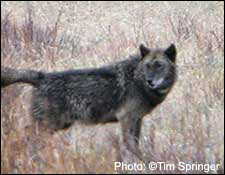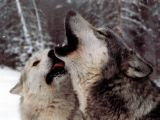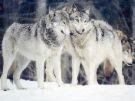
I thought I'd wrap up National Wolf Awareness Week with a tribute to a domesticated canine that I came to know so very long ago (as my true thanks would have to go to the wolf, for without the wolf, I would have never known the love of a dog). That dog is responsible for my lifelong love and concern of all canines everywhere and forever.
Being an only child, my first "true blue" childhood friend was a dog. Not just any dog, either. A stray dog who later would be known as "Brownie" by me and my family. We never knew much about Brownie, only that a brown stray dog that was running the neighborhood streets had one day wandered up into the yard where I was playing. From there, this dog befriended me. My family never took Brownie in. Regrettably, he remained a stray who visited me often. His love and devotion to me was quite apparent, and I only recently learned that Brownie was taken to a farm outside the city because he had become "over-protective" of me. I never knew that about him, and it deeply saddened me - even now, so many years later - that we were separated because of his love and devotion to me. I was afterall a toddler and an only child, and who the heck knows? Maybe I needed protection. I know that I certainly needed a friend, and Brownie was definitely that. And more. For the better part of my life, I wanted a dog (my mom was always a "cat person" so we never had a dog when I was growing up - - Brownie was my first canine experience). My wanting of a dog has never stopped, even though I've now had a few. I never realized until the day that my mom told me this story why I have been so involved with dogs nor did I ever understand why there always seemed to be some void I was trying to fill. Life is just not the same, and it is true that a house just isn't a home without a dog to share it with.





